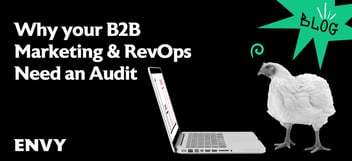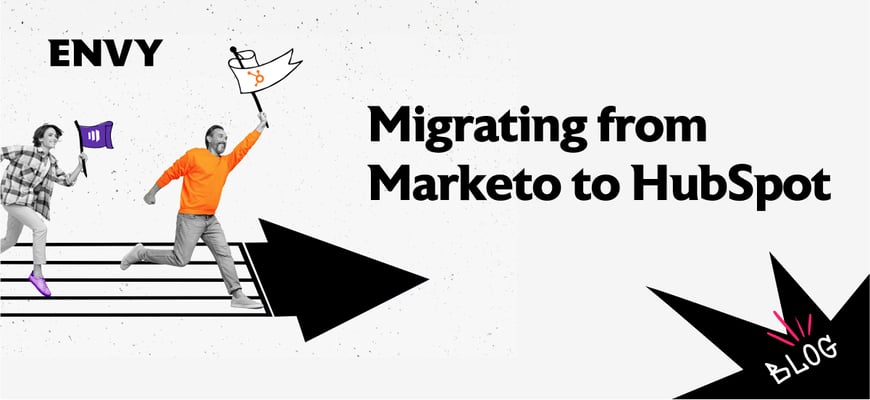
Migrating from Marketo to HubSpot: Why You Should Switch
Marketo and HubSpot are two of the most popular marketing automation platforms available today. Both platforms offer a wide range of features designed to help businesses generate leads, engage with prospects & customers, and sync their marketing data.
Let’s face it though, even before its acquisition by Adobe, Marketo hasn’t really been considered an innovative software suite. Its glory lies in its past, and especially in the hands of capable yet overly-protective communities of faithful marketing operations admins who stick by their favorite automation platform.
In 2024, marketing & business executives must demand more from their ops teams. By insisting on using a marketing platform that has barely changed since the early 2010s, marketing operation teams miss out on major opportunities to serve their organizations better.
I mean, seriously, can you think of any modern software suite that looks like this?

Organizations with Marketo contracts that are set to expire in 2024 should urgently consider switching to HubSpot for the following reasons:
- HubSpot is a product-first innovation powerhouse
- HubSpot is vastly easier to onboard organization users onto than Marketo
- HubSpot has significantly lower ops drag than Marketo
- HubSpot is now enterprise grade SaaS software
- The perception of switching pains is probably worse than the actual pain you’ll experience, especially if you work with experienced migration experts
The pace of product innovation & improvements coming out of HubSpot is, in my humble opinion, absolutely unprecedented. I cannot state this enough: I’m not aware of any other B2B software vendor that moves its core products forward at such velocities.
Compared to HubSpot, the pace of Adobe Marketo’s product release cycle is virtually in stasis. Its codebase has largely remained the same as it was when the software first released over 15 years ago, and if you ask their reps for a product roadmap you’ll mostly get references to other products in the Adobe Experience Suite.
Bottom line: in 2024 you need a modern, evolving software suite. As powerful as Adobe Marketo once was, the fact it barely evolved since should be a major red flag.
HubSpot is vastly easier to onboard organization users onto than Adobe Marketo
In many past discussions with medium to large organizations that were considering their choices for a marketing platform, HubSpot’s ease of use came up as a minus rather than a plus. Too often it was perceived to be a function of the platform’s over-simplicity, its weak spot. This bias has been propagated by many marketing operations professionals, who came to believe that power & complexity of use must go hand in hand.
Indeed, up until relatively recently, i.e. 4-5 years ago, HubSpot's data model and automation architecture had to strain to meet the comparison to Adobe Marketo's powerful automation engine. But this is no longer the case. HubSpot has evolved its product core to a great extent, to the point that it now easily surpasses that of Marketo's.
And yet HubSpot has lost none of its UI philosophy and has remained easy to learn and a joy for users to work with - both experienced and new.
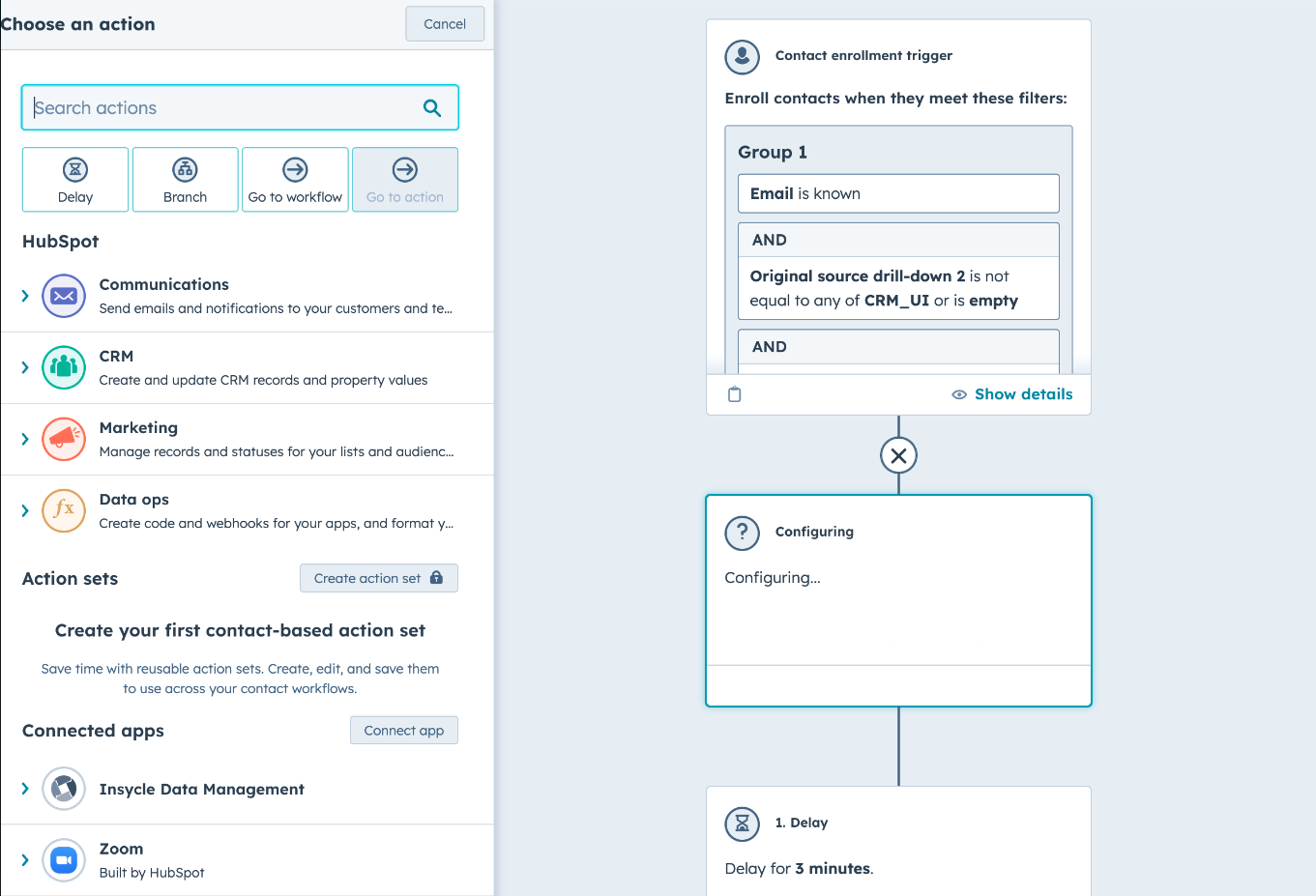
Add to that an incredible wealth of accessible training materials, a hyper active user community and a global partner ecosystem that is compensated primarily based on retention and growth metrics, and it becomes clear that when considering how fast & painless it would be to onboard organization users onto the new marketing platform, HubSpot beats Adobe Marketo, hands down.
HubSpot has significantly lower operational drag than Marketo
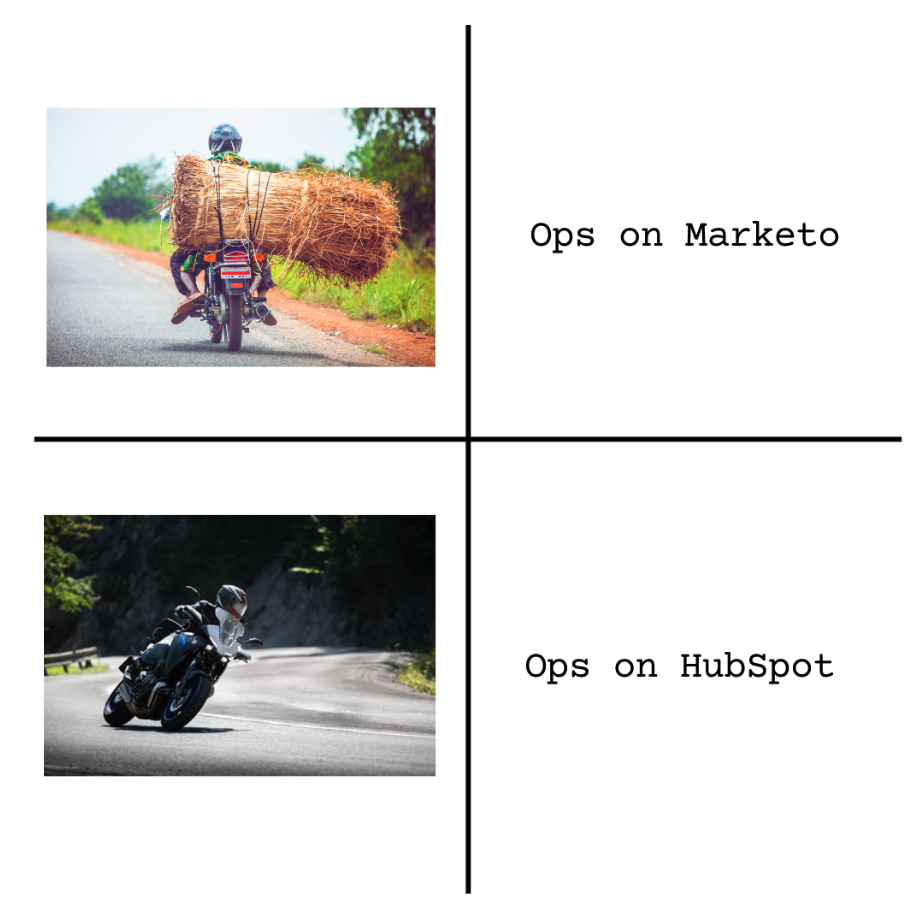
When we say a software system creates ‘operational drag’, we mean that it adds friction to internal processes, instead of removing it. Here’s how this applies to our discussion of Marketo and HubSpot, taken from a real world migration project we managed for one of our clients in 2023.
The process in question was ‘using regionally segmented lists in marketing campaigns’.
Prior to migration, the regional marketing teams relied on a centralized ops team to produce for them the lists they required to run their ABM campaigns, every single time. This was because Marketo UI and list creation experience was deemed too complex for these teams to use, and a decision was made, several years ago, that list preparation would be done by skilled marketing operations team members.
Post migration, regional teams have been trained on list creation protocols on HubSpot, have found the system much easier to use, and are now more independent and can move faster with their programs.
There are many other internal marketing processes that HubSpot influences positively in the same manner, that’s why we can say it generates much less operational drag than Adobe Marketo.
HubSpot is now enterprise grade SaaS software
In 2023 alone, HubSpot has introduced over 800 updates to its core platform. A lot of these had to do with its infrastructure. Areas such as security, governance and compliance - all received major attention.
While historically HubSpot has been viewed by the professional communities (think marketing ops and RevOps pros) as an SMB-first offering vs. Marketo being an Enterprise-first software - that has drastically changed in the past 4-5 years. HubSpot has shifted its product strategy towards being a true CRM and a platform, and it has publicly confirmed its intentions to go upmarket.
This shift in product focus has been mirrored by market perception. To illustrate, take a look at the G2 Grid for Marketing Automation filtered for Mid Market B2B organizations:
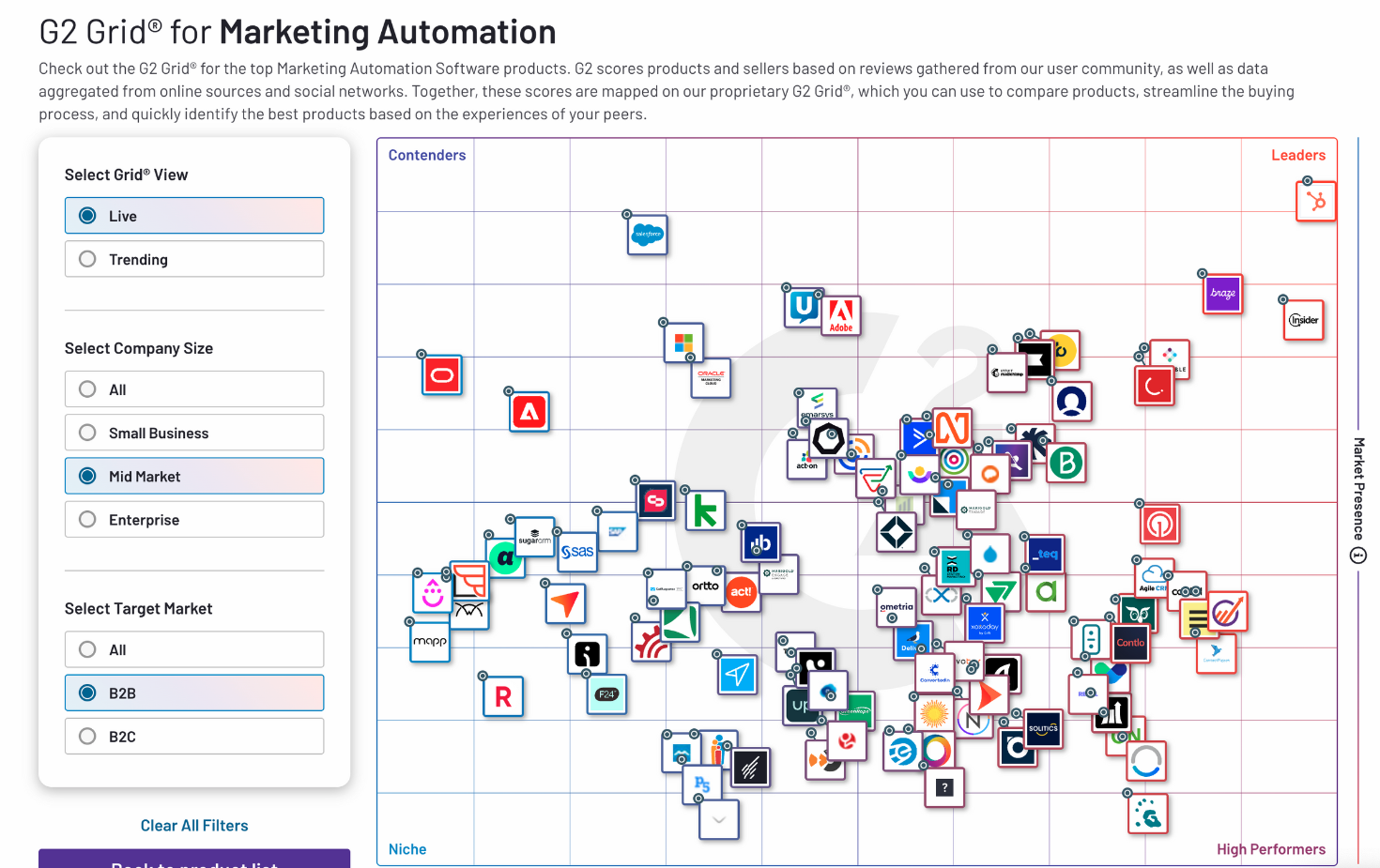
The perception of switching pains is, mostly, perception
Let’s be honest, switching any core business software platform is a pain. It’s just that there’s a perception within RevOps and marketing ops circles that certain parties with vested interests are happy to promote, according to which there are special pains associated with switching off of Adobe Marketo.
My experience is that this perception is derived from Marketo being an expert-oriented system, and that to most non-operations folk in the organization, it feels like this mysterious black box of marketing automation magic.
As with every case of arguing with a preconception, especially one that builds on the “unknown”, the solution is to apply facts & common sense to it, and hope the other party doesn’t have any hidden agendas on top of that.
So the counter argument to a perception of excess pain around the switch from Marketo to HubSpot would be simple: make a list of the sources of those pains. Break down the functions that Marketo fulfills for the organization, and then evaluate their 'mission criticality' value. This exercise can be as detailed as going into Marketo's Campaign Inspector and filtering for active campaigns with specific actions, or as high level as mapping out known processes by interviewing key personnel and going over (hopefully up to date) process documentation. Whatever path you choose, just make sure to end up with a solid decoding of everything important that goes through Marketo.
My guess would be that once laid out bare in front of your eyes, most of the mystery will evaporate and you’ll gain a pretty good idea of exactly how much pain might be involved in the migration project...
As you may have figured, at Envy we’ve already collected some serious experience around this type of migration. When you feel like it's time to make the switch, feel free to contact us.



